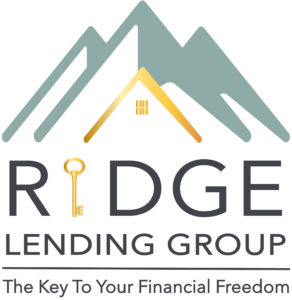
There are many terms commonly used in the investment lending world. When you apply for a loan with Ridge Lending Group, here are some that you may come across:
Annual Percentage Rate (APR) – This calculates the cost to the applicant for borrowing money. The APR reflects the interest rate, any points, mortgage broker fees, and other charges that the applicant pays to get the loan. As APR is an easily manipulated number, it may be difficult, if not impossible, to compare different programs and products based on the APR.
Adjustable-Rate Mortgage (ARM) – This is a type of mortgage that has a fixed rate for a set period of time and then the rate is adjusted. The fixed period can be as short as 1 month or as long as 10 years. All ARM’s are based on an adjustable index + a fixed margin = the Fully Indexed Rate
Borrower: Borrower is the primary applicant on a mortgage application.
Consumer Financial Protection Bureau (CFPB) – An agency of the United States government responsible for consumer protection in the financial sector.
Co-Borrower – The additional applicant on a joint mortgage application. A borrower may apply with a co-Applicant/co-Signer, who can be anyone; however, the application will not be considered a joint application.
Debt to Income (DTI) – This is the ratio of the borrower’s gross monthly income to their debt. Front End DTI refers to all housing related debt. Back End DTI refers to all debt, including Front End DTI. It is typically expressed with both numbers separated by a dash. Example: 30/50 (30% Front End DTI, 50% Back End DTI. Back End DTI will always be more than Front End DTI.)
Desktop Underwriter – An automated underwriting engine. DU is used for underwriting Fannie Mae, Freddie Mac, FHA, VA and USDA loans. Each loan product will have its own DU.
Federal Housing Administration (FHA) – The Federal Housing Administration is a United States government agency founded by President Franklin Delano Roosevelt, created in part by the National Housing Act of 1934. The FHA sets standards for construction and underwriting as well as insures loans made by banks and other private lenders for home building.
Federal National Mortgage Association (FNMA or Fannie Mae) – One of two GSE’s (Government Sponsored Enterprises) created by Congress to increase access to mortgages. Mortgages offered under Fannie Mae guidelines are called “conforming” mortgages since they conform to Fannie Mae guidelines.
Federal Home Loan Mortgage Corporation (FRMC or Freddie Mac) – The second of two GSE’s created by Congress to increase access to mortgages. Mortgages offered under Freddie Mac guidelines are also called “conforming” mortgages since they conform to Freddie Mac guidelines.
Home Equity Line of Credit (HELOC) – A revolving line of credit based on the equity in a property. Generally, HELOC’s are based on the prime rate. The All in One First Lien HELOC is based upon the 30-day U.S. Dollar LIBOR.
Housing and Urban Development (HUD) – HUD is responsible for national policy and programs that address America’s housing needs and enforce fair housing laws. It also oversees the Federal Housing Administration (FHA), the largest mortgage insurer in the world.
Interest Only – This is a payment type where none of the required payment goes towards principal. While the required payment will generally be lower than an amortizing payment, the amount owed does not go down since nothing is going towards principal. Like a fully amortizing mortgage, a borrower is allowed to pay extra towards principal.
London Inter Bank Offered Rate (LIBOR) – A benchmark rate that banks use to lend money to each other. It is typically a marker of the state of the economy. In a bubble, the rate will be high. In a recession, the rate will be low.
Loan To Value (LTV) – The maximum percentage of the appraised value of a property that a lender is willing to fund on. This figure will change with loan product, occupancy and property type.
Mortgage Backed Security (MBS) – These are the investment instruments that are bundled by Fannie Mae, Freddie Mac, and Ginnie Mae for sale on Wall Street.
Mortgage Loan Originator / Loan Officer – A licensed professional who receives a residential mortgage or loan application and offers or negotiates terms of a residential mortgage loan.
Non-Owner Occupied (NOO) – Refers to a rental or investment property.
Owner Occupied (OO) – This is the borrower’s principal or primary residence.
Principal-Interest-Taxes-Insurance (PITI) – This is the total housing expense on a monthly basis. It also includes homeowner’s association fees and monthly mortgage insurance if applicable.
Private Mortgage Insurance (PMI) – This is charged on conforming mortgages that are over 80% LTV. After the loan is paid down to 80% of the properties appraised value, PMI will be canceled by the servicer.
Prepayment Penalty (PPP) – In states that allow it, this is charged by subprime lenders and the occasional conforming lender to assure the lender of making a profitable mortgage investment. A PPP can be either hard or soft. A hard PPP means that the borrower will pay a penalty for paying the mortgage off before a specific time period whether they sell or refinance. Most PPP’s are for 3 years or less. With subprime lenders, the time period will generally be the same as the fixed period of an ARM mortgage. A soft PPP means that the borrower will have to pay a penalty if they sell or refinance within the first year or refinance within the remainder of the PPP.
Prime Rate – A prime rate or prime lending rate is an interest rate used by banks, usually the interest rate at which banks lend to customers with good credit. Some variable interest rates may be expressed as a percentage above or below prime rate.
Real Estate Settlement Practices Act (1974) (RESPA) – Federal law that regulates what must be disclosed to a consumer during a loan transaction and prohibits abusive practices by lenders to consumers.
Truth In Lending Act (1968) (TILA) – Federal law that requires the manner in which banks disclose fees and costs associated with a loan transaction be standardized to enable borrowers to comparison-shop lenders.
TILA-RESPA Integrated Disclosure Rule (TRID) – Instituted by the CFPB as a combination of TILA and RESPA requirement. When TRID is triggered, the loan estimate must go out to a borrower within 3 business days of a complete mortgage application.
The United States Department of Agriculture (USDA) – The U.S. federal executive department responsible for developing and executing federal laws related to rural economic development. The USDA has two loan programs for Primary Residences, the USDA Direct and the USDA Single-Family Housing Guaranteed, which both offer 100% financing on a primary residence purchase or refinance for eligible (low-income) borrowers and eligible (rural) properties.
VA – The United States Department of Veterans Affairs. The VA has loan programs for veterans to receive 100% financing on a primary residence purchase or refinance.
Verification of Deposit (VOD) – This is a form sent to the bank/credit union/savings bank to verify the amount of funds in the account and to provide an average balance over a specified period, usually 60 days.
Verification of Employment (VOE) – This is a form that is sent to the employer to verify employment. Many times, a VOE will be done verbally by the lender just prior to closing.
W-2 – W-2s are tax forms provided by the employer to show total year’s income.
2-4 Unit – Duplex, Triplex or Quadplex. The most units RLG will lend on is 4. Anything more than 4 units will be a commercial transaction.


